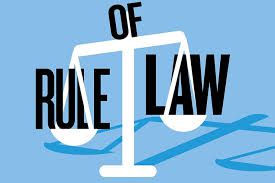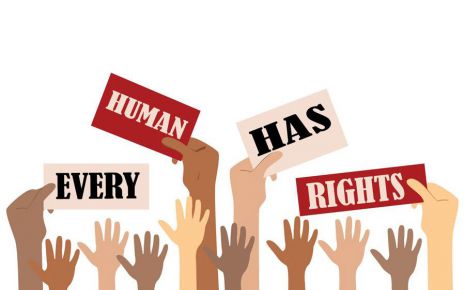Legal Landscape of Medical Negligence: Definitions, Implications, and Juridical Perspectives
Torts refers to a civil wrong or any breach of civil duty imposed by law,
against a person or property, which gives rise to civil right of action for a
remedy not exclusive to any other area of law, like- breach of contract, breach
of trust etc.
The term "torts," originating from the Latin word "tortum," which means twisted or crooked, refers to civil wrongful actions committed by one individual against another person or their property. These actions lead to legal harm and give rise to claims for unquantifiable damages. In India, tort-related cases are adjudicated in civil courts, and remedies can involve financial compensation or court orders to prevent certain actions.
Negligence often refers to being careless. It is a particular kind of tort that results from people acting carelessly and negligently. Negligence is defined as a legal injury brought about by a person's careless or reckless act or omission, for which they must pay damages.
Medical negligence, frequently referred to as medical malpractice, is a grave concern in the subject of healthcare. It refers back to the failure of healthcare carriers to meet the anticipated standard of care, ensuing in damage to sufferers. This introduction presents a brief assessment of medical negligence, highlighting its importance, causes, and implications.
In the world of healthcare, patients area an incredible amount of believe in their healthcare vendors, waiting for that they'll acquire ready and safe medical care. However, scientific negligence arises while this accept as true witch is breached. It happens while a healthcare professional, whether or not a physician, nurse, physician, or every other practitioner, deviates from the established popular of care, main to damage or injury to the patient.
The reasons of scientific negligence are multifaceted. Miscommunication is a common aspect, whether or not it's insufficient verbal exchange between healthcare vendors or insufficient facts supplied to patients. Fatigue and strain amongst healthcare experts due to the annoying nature of their paintings can impair their selection-making abilities6, probably ensuing in mistakes. Furthermore, staffing shortages and systemic demanding situations inside healthcare institutions can make contributions to lapses in affected person care.
The results of medical negligence are profound. Patients who revel in scientific negligence may also suffer from physical and emotional trauma, financial losses, and diminished high-quality of lifestyles. Healthcare carriers face the risk of damaged reputations and increased coverage rates. At a broader stage, medical negligence can stress healthcare structures, leading to monetary burdens and escalating healthcare costs.
This introduction presents a glimpse into the complex difficulty of medical negligence, which touches the lives of sufferers and healthcare specialists alike. It underscores the importance of information the causes and consequences of medical negligence whilst emphasizing the need for solutions that prioritize patient safety and the development of healthcare practices.
Definition:
"Medical negligence means any tort or breach of contract based on health care or professional services rendered, or which should have been rendered, by a health care provider to a patient. The standard of skill and care required of every health care provider in rendering professional services or health care to a patient shall be that degree of skill and care ordinarily employed in the same or similar field of medicine as defendant, and the use of reasonable care and diligence."
The famous British case of "Bolam v. Friern Hospital Management Committee[1]" (1957) is a prime illustration of a medical negligence lawsuit. In this instance, the patient, Mr. Bolam, claimed that his physician had not given him enough information about the potential risks of a particular medical procedure. The "Bolam test," which was instituted by the court, stipulates that a healthcare provider is considered negligent if they fail to follow the standard of care that a credible body of medical opinion in their field has recognized. This case had a tremendous impact on the legal threshold for proving medical care negligence.
It's essential to word that clinical negligence can appear in diverse forms and isn't always restrained to these unique classes. Each case is specific, and the occasions surrounding the negligence may also range, but all of them percentage the not unusual element of healthcare providers failing to satisfy the expected preferred of care, main to damage or damage to the patient. Legal treatments can be to be had to patients who have suffered because of scientific negligence, but proving a case typically requires demonstrating that the healthcare company's moves deviated from the standard of care and at once caused damage.
The case of Indian Medical Association vs. V. P. Shantha & others [7]was a landmark case in India that brought the conduct of medical malpractice under the purview of the Consumer Protection Act, 1986. The judgment in this case had significant implications for the legal framework surrounding medical care and patients' rights. It defined medical care as a "service" that was covered under the Consumer Protection Act and clarified that a person seeking medical attention could be considered a consumer if specific criteria were met.
Defences Available
In cases of medical negligence, healthcare providers and institutions may raise various defences to mitigate or refute liability. These defences aim to challenge the plaintiff's claims or lessen the degree of fault attributed to the defendant. Some common defences in medical negligence cases include:
Conclusion
In the realm of healthcare, professionals are the foundation upon which the well-being of patients rests. Patients place their trust in healthcare providers based on their skills, expertise, and knowledge. However, when healthcare professionals fail to exercise due care and precision in their work, it can lead to dire consequences for the patients they serve.
Healthcare professionals cannot always guarantee specific health outcomes, but they are obligated to ensure the safe and competent execution of medical treatments and procedures. While the results of medical interventions may vary, the commitment to safeguarding the health and safety of patients remains paramount. Unfortunately, there are instances when healthcare professionals deny their errors, leaving patients to bear the burden of damages resulting from medical negligence.
In light of these challenges, it is crucial for healthcare professionals to approach every medical scenario with meticulous care, precision, and a steadfast commitment to ethical and clinical standards. This approach not only upholds the trust patients place in their healthcare providers but also minimizes the potential for medical negligence and its consequences.
In the context of medical negligence, healthcare professionals have an ethical duty to maintain the highest standards of patient care and continually enhance their skills and knowledge. By doing so, they not only fulfill their professional obligations but also contribute to the betterment of healthcare as a whole, where patients can rely on the competence and integrity of the healthcare professionals they entrust with their health and well-being.
End-Notes:
The term "torts," originating from the Latin word "tortum," which means twisted or crooked, refers to civil wrongful actions committed by one individual against another person or their property. These actions lead to legal harm and give rise to claims for unquantifiable damages. In India, tort-related cases are adjudicated in civil courts, and remedies can involve financial compensation or court orders to prevent certain actions.
Negligence often refers to being careless. It is a particular kind of tort that results from people acting carelessly and negligently. Negligence is defined as a legal injury brought about by a person's careless or reckless act or omission, for which they must pay damages.
Medical negligence, frequently referred to as medical malpractice, is a grave concern in the subject of healthcare. It refers back to the failure of healthcare carriers to meet the anticipated standard of care, ensuing in damage to sufferers. This introduction presents a brief assessment of medical negligence, highlighting its importance, causes, and implications.
In the world of healthcare, patients area an incredible amount of believe in their healthcare vendors, waiting for that they'll acquire ready and safe medical care. However, scientific negligence arises while this accept as true witch is breached. It happens while a healthcare professional, whether or not a physician, nurse, physician, or every other practitioner, deviates from the established popular of care, main to damage or injury to the patient.
The reasons of scientific negligence are multifaceted. Miscommunication is a common aspect, whether or not it's insufficient verbal exchange between healthcare vendors or insufficient facts supplied to patients. Fatigue and strain amongst healthcare experts due to the annoying nature of their paintings can impair their selection-making abilities6, probably ensuing in mistakes. Furthermore, staffing shortages and systemic demanding situations inside healthcare institutions can make contributions to lapses in affected person care.
The results of medical negligence are profound. Patients who revel in scientific negligence may also suffer from physical and emotional trauma, financial losses, and diminished high-quality of lifestyles. Healthcare carriers face the risk of damaged reputations and increased coverage rates. At a broader stage, medical negligence can stress healthcare structures, leading to monetary burdens and escalating healthcare costs.
This introduction presents a glimpse into the complex difficulty of medical negligence, which touches the lives of sufferers and healthcare specialists alike. It underscores the importance of information the causes and consequences of medical negligence whilst emphasizing the need for solutions that prioritize patient safety and the development of healthcare practices.
Definition:
"Medical negligence means any tort or breach of contract based on health care or professional services rendered, or which should have been rendered, by a health care provider to a patient. The standard of skill and care required of every health care provider in rendering professional services or health care to a patient shall be that degree of skill and care ordinarily employed in the same or similar field of medicine as defendant, and the use of reasonable care and diligence."
The famous British case of "Bolam v. Friern Hospital Management Committee[1]" (1957) is a prime illustration of a medical negligence lawsuit. In this instance, the patient, Mr. Bolam, claimed that his physician had not given him enough information about the potential risks of a particular medical procedure. The "Bolam test," which was instituted by the court, stipulates that a healthcare provider is considered negligent if they fail to follow the standard of care that a credible body of medical opinion in their field has recognized. This case had a tremendous impact on the legal threshold for proving medical care negligence.
Essentials Or Necessary Conditions
To establish medical negligence, certain essential elements or necessary conditions must be present. These typically include:-
Duty of Care:The healthcare professional must owe a duty of care to the patient. This duty is a legal obligation to provide a certain standard of care and treatment.
When caring for patients, a physician or other health care provider owes the following duties of care to them:
- A responsibility of care when selecting whether to take on the matter
- A duty of care when choosing the course of therapy
- A duty of care in the way the medication is administered
-
Breach of Duty:There must be a breach of the duty of care. This occurs when the healthcare provider fails to meet the standard of care expected in similar circumstances. It involves a deviation from accepted medical practices.
Res Ipsa Loquitur, which is Latin for "the thing speaks for itself," is a legal theory that holds that even in the absence of specific proof of negligence, one is presumed to have been negligent if they had exclusive control over the factor that caused the injury and the accident would not have occurred in the absence of negligence.
-
Causation:
There must be a direct link between the breach of duty and the patient's injury. The breach of duty must be the cause of the harm suffered by the patient. This includes both factual causation (but for the breach, the injury wouldn't have occurred) and legal causation (the breach is a substantial factor in causing the harm).
-
Damages:The patient must have suffered actual harm or damages as a result of the breach of duty. This can include physical injuries, emotional distress, additional medical expenses, lost wages, or other measurable losses.
- Foreseeability:It should have been reasonably foreseeable to the healthcare provider that their actions or omissions could result in harm to the patient.
Types Of Medical Negligence:
Medical negligence contains a extensive range of mistakes and omissions in the healthcare discipline. Some commonplace forms of scientific negligence consist of:- Misdiagnosis or Delayed Diagnosis: Occurs when a healthcare provider fails to efficaciously identify a medical condition or disease directly. This can cause behind schedule treatment and capacity harm to the patient.
- Jacob Mathew v. State of Punjab (2005): In this case, the Supreme Court laid down guidelines for the prosecution of doctors for medical negligence under Section 304A of the Indian Penal Code. The court clarified the conditions under which a doctor could be held criminally liable for patient's death due to negligence.
- Surgical Errors: Includes errors during surgical procedure, together with performing the wrong method, running on the incorrect frame part, or leaving surgical contraptions in the affected person.
- Van Camp v. McAfoos (1992): In this United States case, a surgeon operated on the wrong leg of a patient. The court held that this was a clear instance of negligence and awarded damages to the patient. This case emphasized the importance of proper surgical site verification and established the liability of the surgeon for operating on the wrong body part.
- Medication Errors: Involves prescribing the incorrect medicine, incorrect dosages, or administering medications that cause adverse reactions or harm to the patient.
- Martin F. D'Souza v. Mohd. Ishfaq (2009): This case involved medical negligence claims related to the administration of anaesthesia.
- Inadequate Informed Consent: Occurs while a healthcare provider does now not completely inform the affected person about the dangers, blessings, and options of a medical system or remedy, main to selections made without proper know-how.
- Canterbury v. Spence (1972)[5]: This landmark U.S. case laid the groundwork for the modern concept of informed consent. The court ruled that physicians have a duty to disclose the risks and alternatives to a proposed medical procedure, and the patient has the right to make an informed decision based on this information.
It's essential to word that clinical negligence can appear in diverse forms and isn't always restrained to these unique classes. Each case is specific, and the occasions surrounding the negligence may also range, but all of them percentage the not unusual element of healthcare providers failing to satisfy the expected preferred of care, main to damage or damage to the patient. Legal treatments can be to be had to patients who have suffered because of scientific negligence, but proving a case typically requires demonstrating that the healthcare company's moves deviated from the standard of care and at once caused damage.
Liability:
The liability of an individual for their unacceptable actions can be categorized into two types, depending on the harm or injury suffered by the affected person:1. Civil Liability:
- Civil liability typically involves claims for damages suffered as compensation. For example, if there is a breach of a duty of care during a medical procedure or while a patient is under the care of a hospital or a medical professional, they may be held vicariously liable for any harm caused.
- This means that they are responsible for paying damages as compensation to the injured party. In some cases, senior doctors may also be held vicariously liable for the actions of junior doctors, even if they were not directly involved in the wrongful actions.
- The case of Mr. M Ramesh Reddy v. State of Andhra Pradesh [6] highlights an instance of medical negligence where the hospital and its healthcare providers were found negligent for not maintaining cleanliness in the restroom. This negligence resulted in an obstetrics patient falling in the restroom, ultimately leading to her death. As a result of this negligence, the court awarded compensation of Rs. 1 Lakh against the hospital. This case underscores the legal principle that hospitals and healthcare providers have a duty of care to ensure the safety and well-being of patients not only in medical procedures but also in maintaining a safe environment within the healthcare facility. The failure to maintain basic hygiene standards can result in serious consequences and legal liability for medical institutions.
2. Criminal Liability:
- In cases of medical negligence can arise when a patient's death occurs as a result of treatment, and a criminal case is filed under Section 304A of the Indian Penal Code. Section 304A deals with cases where death is caused by a rash or negligent act, but it does not amount to culpable homicide. The section states that whoever causes the death of a person by such a rash or negligent act shall be subject to punishment, which may include:
- Imprisonment for up to two years.
- A fine.
- Both imprisonment and a fine.
The case of Indian Medical Association vs. V. P. Shantha & others [7]was a landmark case in India that brought the conduct of medical malpractice under the purview of the Consumer Protection Act, 1986. The judgment in this case had significant implications for the legal framework surrounding medical care and patients' rights. It defined medical care as a "service" that was covered under the Consumer Protection Act and clarified that a person seeking medical attention could be considered a consumer if specific criteria were met.
Defences Available
In cases of medical negligence, healthcare providers and institutions may raise various defences to mitigate or refute liability. These defences aim to challenge the plaintiff's claims or lessen the degree of fault attributed to the defendant. Some common defences in medical negligence cases include:
- Standard of Care: Medical professionals may contend that, under the circumstances, they followed the proper standard of care. To bolster their argument that their actions were in line with what a prudent healthcare practitioner would have done in a comparable circumstance, they can call in expert witnesses.
- Contributory Negligence: This defence argues that the patient's injuries were caused in part by their own behaviour or by their disregard for medical advice. It implies that part of the injury the patient experienced was due to their own irresponsibility.
- Assumption of Risk: This argument argues that the patient freely accepted the dangers involved in a procedure or treatment and was aware of them. In these situations, it's possible that the patient acknowledged the risks by signing a consent document.
- Lack of Causation: Defendants may contend that the patient's injuries were not caused by them. They must show that the injuries were not directly caused by the alleged negligence in order for this defense to be successful.
- Emergency Doctrine: When medical personnel must act quickly in an emergency, they may claim that their actions were reasonable in light of the urgency of the circumstance. This defense recognizes that the standard of care in an emergency may be different from that under ordinary circumstances.
Conclusion
In the realm of healthcare, professionals are the foundation upon which the well-being of patients rests. Patients place their trust in healthcare providers based on their skills, expertise, and knowledge. However, when healthcare professionals fail to exercise due care and precision in their work, it can lead to dire consequences for the patients they serve.
Healthcare professionals cannot always guarantee specific health outcomes, but they are obligated to ensure the safe and competent execution of medical treatments and procedures. While the results of medical interventions may vary, the commitment to safeguarding the health and safety of patients remains paramount. Unfortunately, there are instances when healthcare professionals deny their errors, leaving patients to bear the burden of damages resulting from medical negligence.
In light of these challenges, it is crucial for healthcare professionals to approach every medical scenario with meticulous care, precision, and a steadfast commitment to ethical and clinical standards. This approach not only upholds the trust patients place in their healthcare providers but also minimizes the potential for medical negligence and its consequences.
In the context of medical negligence, healthcare professionals have an ethical duty to maintain the highest standards of patient care and continually enhance their skills and knowledge. By doing so, they not only fulfill their professional obligations but also contribute to the betterment of healthcare as a whole, where patients can rely on the competence and integrity of the healthcare professionals they entrust with their health and well-being.
End-Notes:
- Bolam v. Friern Hospital Management Committee MANU/UKHL/0061/1997
- Martin F. D'Souza vs. Mohd. Ishfaq (17.02.2009 - SC) : MANU/SC/0225/
- Canterbury v. Spence (1972) 464 F (2d) 772
- Mr. M. Ramesh Reddy v. State of Andhra Pradesh, (1975) 36 STC 439 AP
- Indian Medical Association vs. V. P. Shantha & others, MANU/SC/0836/1995
Law Article in India
Legal Question & Answers
Lawyers in India - Search By City
LawArticles
How To File For Mutual Divorce In Delhi

How To File For Mutual Divorce In Delhi Mutual Consent Divorce is the Simplest Way to Obtain a D...
Increased Age For Girls Marriage

It is hoped that the Prohibition of Child Marriage (Amendment) Bill, 2021, which intends to inc...
Facade of Social Media

One may very easily get absorbed in the lives of others as one scrolls through a Facebook news ...
Section 482 CrPc - Quashing Of FIR: Guid...

The Inherent power under Section 482 in The Code Of Criminal Procedure, 1973 (37th Chapter of t...
The Uniform Civil Code (UCC) in India: A...

The Uniform Civil Code (UCC) is a concept that proposes the unification of personal laws across...
Role Of Artificial Intelligence In Legal...

Artificial intelligence (AI) is revolutionizing various sectors of the economy, and the legal i...








Please Drop Your Comments